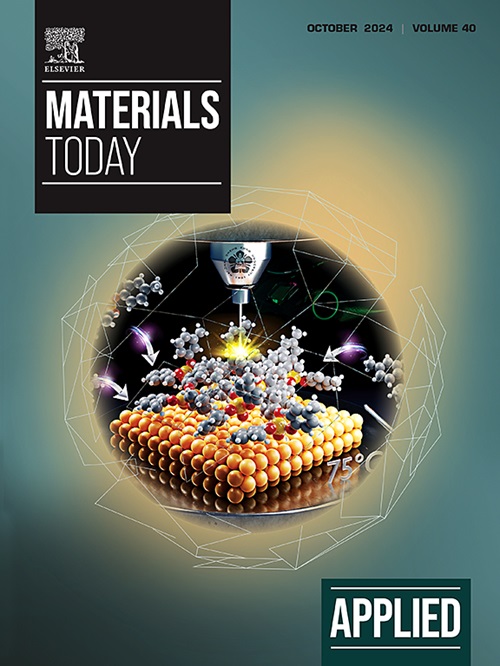通过生物工程细胞外囊泡革新癌症治疗:探索纳米囊泡到全合成解决方案
IF 6.9
2区 材料科学
Q1 MATERIALS SCIENCE, MULTIDISCIPLINARY
引用次数: 0
摘要
随着癌症在全球范围内的流行,有必要开发各种治疗方法。然而,现有方法的有效性和安全性往往面临一些限制。纳米技术作为一种解决方案应运而生,使人们能够设计出能够有效递送药物的纳米系统。这些纳米系统可以解决药物稳定性和溶解度低以及缺乏肿瘤靶向性等难题。虽然纳米材料具有优势,但某些纳米粒子也有自身的局限性,这促使研究人员探索创新的给药系统。细胞外囊泡(EVs)是细胞分泌的天然纳米颗粒,它的使用是一个很有前景的途径。细胞外囊泡具有生物相容性、稳定性和靶向性,是理想的药物载体。然而,这一领域仍然存在挑战。这些挑战包括有限的产量、复杂性、低效的货物装载以及药物的可控释放。为了克服这些挑战,研究人员一直在采用工程技术来改变电动汽车的结构,从而增强其固有特性。表面修饰和将 EVs 与其他结构相结合的混合系统已显示出解决这些局限性的潜力。本综述将重点介绍 EVs 的结构及其在癌症治疗和诊断中的关键作用。文章首先探讨了 EVs 的生物功能和特性。此外,综述还介绍了分离 EVs 的策略,阐明了用于获取这些微小实体的方法。最后,综述强调了生物工程技术在癌症治疗中的生物医学应用。本文章由计算机程序翻译,如有差异,请以英文原文为准。
Revolutionizing cancer treatment via bioengineered extracellular vesicles: Exploring nanovesicles to fully synthetic solutions
The prevalence of cancer on a global scale has necessitated the development of various therapeutic approaches. However, the effectiveness and safety of existing methods often face some limitations. Nanotechnology has emerged as a solution, enabling the design of nanosystems that can effectively deliver drugs. These nanosystems address challenges such as low drug stability and solubility, as well as the lack of tumor targetability. While nanomaterials offer advantages, certain nanoparticles have their own limitations, which has prompted researchers to explore innovative drug delivery systems. One promising avenue is the use of extracellular vesicles (EVs), which are natural nanoparticles secreted by cells. EVs possess biocompatibility, stability, and targeting capabilities, making them ideal candidates for drug carriers. However, challenges still remain in this field. These include limited production yield, complexity, inefficient cargo loading, and controlled release of drugs. To overcome these challenges, researchers have been employing engineering techniques to modify the structures of EVs, enhancing their intrinsic properties. Surface modification and hybrid systems that combine EVs with other structures have shown potential in addressing these limitations. This review focuses on the landscape of EVs and their crucial role in cancer therapeutics and diagnosis. It begins by exploring the biological functions and properties of EVs. Additionally, the review introduces the strategies for isolating EVs, shedding light on the methodologies used to harvest these minute entities. Finally, the review highlights the biomedical applications of bioengineering techniques in cancer treatment.
求助全文
通过发布文献求助,成功后即可免费获取论文全文。
去求助
来源期刊

Applied Materials Today
Materials Science-General Materials Science
CiteScore
14.90
自引率
3.60%
发文量
393
审稿时长
26 days
期刊介绍:
Journal Name: Applied Materials Today
Focus:
Multi-disciplinary, rapid-publication journal
Focused on cutting-edge applications of novel materials
Overview:
New materials discoveries have led to exciting fundamental breakthroughs.
Materials research is now moving towards the translation of these scientific properties and principles.
 求助内容:
求助内容: 应助结果提醒方式:
应助结果提醒方式:


